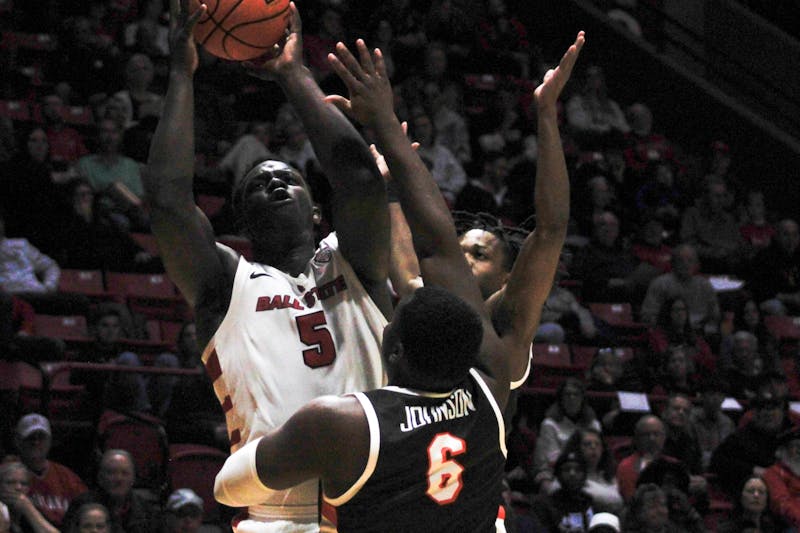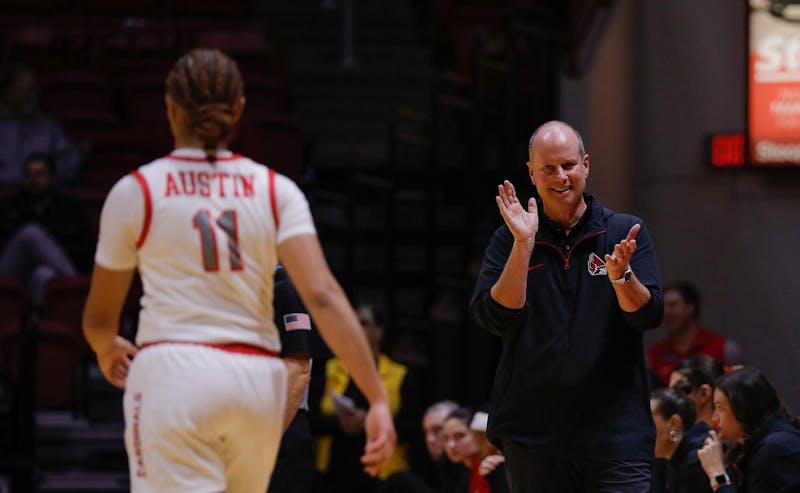Dagney Faulk, Ball State director of research in the Center for Business and Economic Research (CBER), and Michael Hicks, George and Frances Ball distinguished professor of economics and CBER director, recently published a study about school choice leading to $88 million in savings for the State of Indiana in the 2019-20 school year — about 1 percent of the state’s annual general fund spending on education.
School choice allows students to attend school away from their assigned district in a public, charter or private school of their choice.
“There's a lot of school choice in Indiana — probably the most school choice of any state in the U.S.,” Faulk said. “What we focused on is the fiscal impact of school choice. We did some basic calculations to see how school choice affects overall state funding for education. What we found is that, as a result of school choice, the state spends about $88 million less in the presence of the school choice options than [it] would have spent if students had gone to the school in their [assigned] district.”
School choice has been available in Indiana since the 2011-12 school year and it gives the option for parents and students to choose to attend whichever school they want, including private and charter schools. Faulk and Hicks’ study found more students were transferring out of the schools with the highest per-student funding than into them.
“The biggest winners in terms of receiving transfers are local public schools,” Hicks said. “So, the number one group of people in the state who have moved from one school to another are those who have moved from one local public school to another local public school nearby. And then, number two is from a local public school to a charter school. And number three is from a local public school to a private school with a voucher.”
The State of Indiana started offering vouchers to low-income families to help them afford private schools the same year school choice went into effect. These vouchers are financial support from the state that cover up to 90 percent of children’s private school tuition.
“If families meet the income and other guidelines, they can potentially use a voucher to send their kids to private schools,” Faulk said.
Despite the option to make private schools more affordable, Hicks said the state only pays for about 6.2 percent of school-aged children to attend charter and private schools in an Indiana Economic Digest op-ed.
Hicks said most of the expenses associated with school maintenance involve the cost of salaries and benefits. When schools experience a decrease in state funding, it’s usually reflected in changes to employee income.
“The cost of schools is almost exclusively a labor cost, which includes not just salaries, but benefits, healthcare costs and retirement pay,” Hicks said. “So the deep cuts that were made between 2010 and last year meant that most of the cost of most of the reduction in [state spending per student] was borne by workers — from lunchroom and school bus drivers to superintendents across the board.”
Schools that see students transferring out of their districts will have decreased funding from the state, but can offset that by accepting transfer students, which will bring the student body population back up for funding purposes.
Public schools are required to accept every student who wants to attend their schools, unless certain students have significant behavioral records. If schools have more applications than available spaces, they must accept students randomly via a lottery drawing, according to the Education Commission of the States.
“I think most people realize that [school choice is] here to stay,” Faulk said. “It's pretty much ingrained in the Republican Party, which is the party in power, and the state is very supportive of school choice programs.”
While Hicks said school choice has its fiscal benefits, he said the decreased spending on education under inflation-adjusted budgets across the last 10 years outweighed the recent restoration of K-12 budget cuts.
“As Indiana’s economy grew, funding for schools declined,” Hicks said in the op-ed. “Indiana wasn’t the only state to do so, but educational attainment in Indiana lags the nation. Even with the benefits of school choice, Indiana’s cuts to education and growing educational gap clearly have slowed our economic growth.”
Contact Lauren Clark with comments at lnclark2@bsu.edu.





The Daily News welcomes thoughtful discussion on all of our stories, but please keep comments civil and on-topic. Read our full guidelines here.